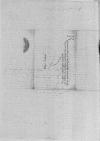Letter #5692
Sigismund I Jagiellon to Ioannes DANTISCUSCracow (Kraków), 1538-05-17
| received [1538]-05-22 Manuscript sources:
| ||||||||||||||||||
Text & apparatus & commentary Plain text Text & commentary Text & apparatus Excerpts concerning Dantiscus' travels
Reverendo in Christo Patri, domino
Reverende in Christo Pater, domine, sincere nobis dilecte.
Magno fuit ea res nobis dolori, quod Paternitatem Vestram ita gravi morbo conflictatam esse intelleximus, sed recreati tamen sumus, cum levatam esse magna illius parte paulo post cognovimus. Speramus quidem et optamus prorsus iam esse liberam estque nobis id vehementer gratum, quod se tanto erga nos studio esse profitetur, ut si vita ponenda sit in laboribus nostra causa susceptis, non gravatim se id facturam scribat. Nos vero nihil magis cupimus, quam ut Paternitas Vestra, cuius animum hunc talem in nos non possumus non amare plurimum, quam longissimo tempore salva sit et incolumis et nisi magna nos urgeret necessitas, non essemus commissuri, ut aliquid ei oneris imponeremus, si nondum est plane suis viribus restituta.
Ac si licitum nobis esset, daremus operam, ut prorogaretur tempus obeundae legationis, sed ut ex litteris serenissimi
Quare hortamur Paternitatem Vestram, etiam si non prorsus ab omnibus tentationibus esset libera, tamen cum tantam huius rei nobis impendere necessitatem videat, Christi freta auxilio in viam se det munusque istud legationis ex nostra dignitate ita obeat, ut si non ad praestitutum a serenissimo
Quod ad viaticum attinet, sciat Paternitas Vestra nos ita ceteros quoque, qui ante illam ad hoc munus designati fuerant, providisse, quemadmodum illam providimus arbitramurque illi per nos attributam pecuniam facile suffecturam. Si quid tamen deest in pecunia, gratia nostra illud per occasionem Paternitati Vestrae compensabit.
Atque ut ne multum laboris capere Paternitatem Vestram in obeundo munere isto sit necesse, mittimus illi et cf.
Mittimus praeterea annulum, qui nomine
Mittimus mandatum a nobis unum, a serenissimo
Quae valeat et sit felix.
Datae

